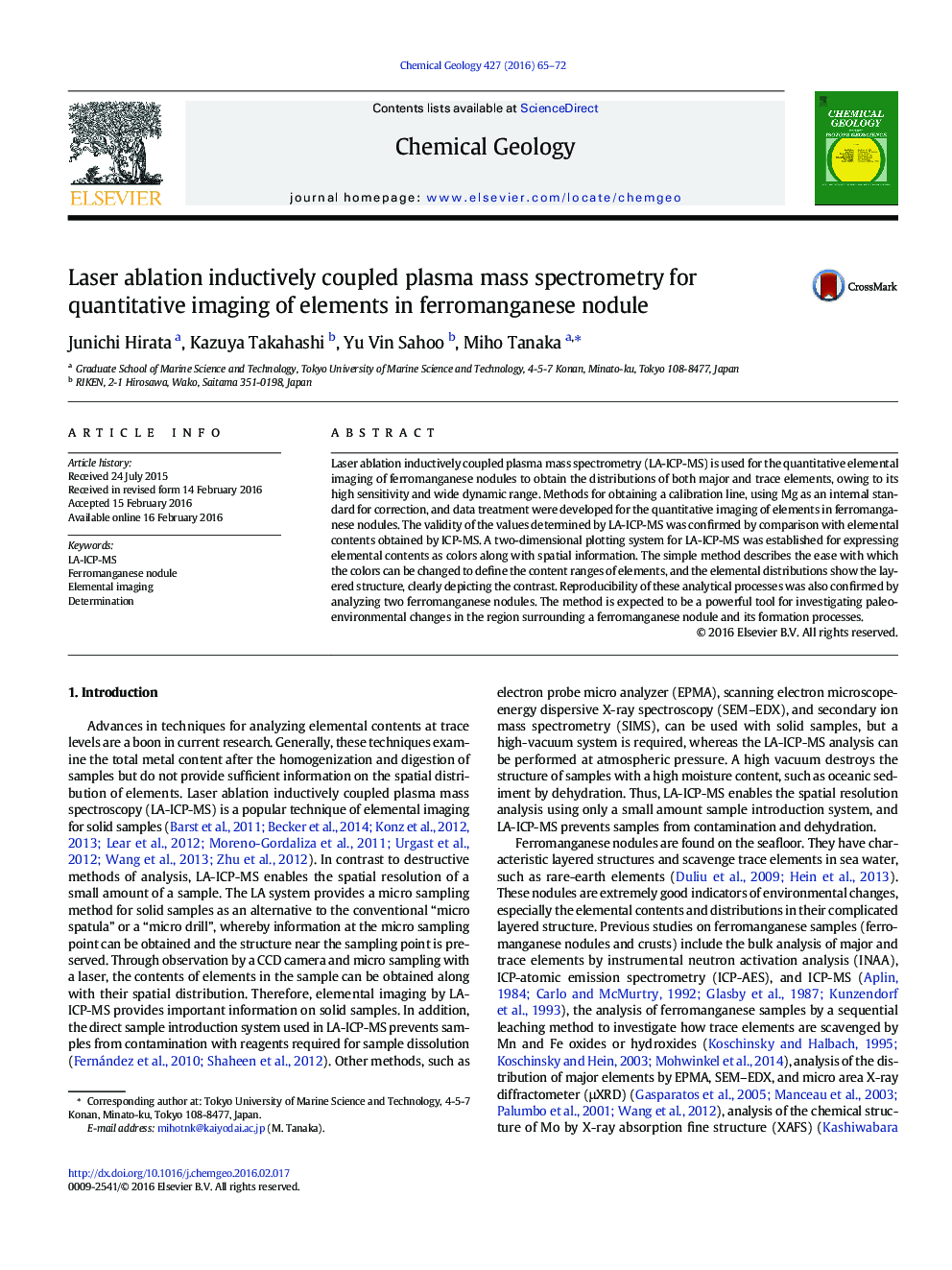| Article ID | Journal | Published Year | Pages | File Type |
|---|---|---|---|---|
| 6436140 | Chemical Geology | 2016 | 8 Pages |
â¢Laser ablation-inductively coupled plasma mass spectrometry (LA-ICP-MS) was used.â¢Quantitative analysis of metals in ferromanganese nodules was performed.â¢Elemental imaging system for LA-ICP-MS analysis was established.â¢Contents of both major and trace elements in two ferromanganese nodules were imaged.
Laser ablation inductively coupled plasma mass spectrometry (LA-ICP-MS) is used for the quantitative elemental imaging of ferromanganese nodules to obtain the distributions of both major and trace elements, owing to its high sensitivity and wide dynamic range. Methods for obtaining a calibration line, using Mg as an internal standard for correction, and data treatment were developed for the quantitative imaging of elements in ferromanganese nodules. The validity of the values determined by LA-ICP-MS was confirmed by comparison with elemental contents obtained by ICP-MS. A two-dimensional plotting system for LA-ICP-MS was established for expressing elemental contents as colors along with spatial information. The simple method describes the ease with which the colors can be changed to define the content ranges of elements, and the elemental distributions show the layered structure, clearly depicting the contrast. Reproducibility of these analytical processes was also confirmed by analyzing two ferromanganese nodules. The method is expected to be a powerful tool for investigating paleo-environmental changes in the region surrounding a ferromanganese nodule and its formation processes.
Graphical abstractDownload full-size image
